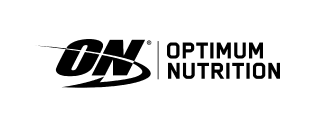
- Health advice
- Jul 09, 2015
Are kids fussy eaters?
If you are a parent, or have spent even a small amount of time around a child, you may have come across a fussy eater or two! For some children, it may be that they have food sensitivities or allergies, or are just particular about new flavours. For others, it may be their way of ‘pushing the boundaries’ with you. No matter the reason, it’s normal for us to worry about their nutrition.The vital importance of good nutrition
The fact is, the health and nutritional status of a child lays the foundation for their long term health. Poor nutritional status in childhood has a lasting effect on adult health. Macro and micronutrient deficiencies in childhood may impair- neurological
- endocrine
- visual
- skeletal
- immunological and
- gastrointestinal development
So what about supplements for kids?
Supplementation in little people is not always desirable (or easy), so nutrient-dense food options are often a more advisable idea. To help boost a child’s nutrition, you can enhance their food with a powerful, nutrient-rich protein powder. A super-charged pea protein and multi-nutrient supplement is ideal for children. It is a great way to add protein, important vitamins and minerals and fatty acids into children’s daily diets.Think about Pea Protein
Pea protein is fantastic for children, as it has low allergy potential for those with gluten or dairy sensitivities. This form of protein is popular with vegetarians and vegans, but has benefits for everyone as it is easily digested. We may think of protein mainly for muscle growth, but it is also essential for brain development. Pea protein is a complete protein, containing all the amino acids.The value of Coconut Oil with it's MCT's
A formula which contains essential fatty acids derived from coconut oil, again in a readily-absorbed form, is also important. Furthermore, look for a comprehensive mix of B group vitamins, vitamins C, D3 and E, minerals, antioxidant extracts, medium chain triglycerides (MCTs) and digestive enzymes to further enhance absorption. Due to their smaller molecules, MCTs are quickly and easily absorbed even in individuals with digestive disorders compared to other fatty acids.1 This allows MCTs to be used as an efficient and readily available fuel source, instead of being stored.2,3 The B group vitamins are essential for cognition and learning and are involved in the production of neurotransmitters; the brain’s chemicals which are in charge of sending and receiving messages. The energy requirements of the brain are high and depend on adequate levels of B vitamins. Deficiencies in B vitamins are often found in children with poor concentration, anxiety, irritability, poor memory and sleep disturbances.4-6Fussy Eaters may have allergies
There is also a very strong connection between ‘fussy eating’ and learning issues. Some reasons why fussy eaters have issues with certain foods might be: food allergies, the sensation/texture of a food, problems with chewing or swallowing (common in some developmental disorders) and also poor intestinal flora.7 Paramount, especially for our young patients, is providing effective and palatable products at the highest standards of quality and efficacy. Ask your healthcare practitioner to recommend products that have been specifically formulated for children by dietitians, nutritionists and naturopaths who have clinical experience in the unique treatment of children’s health. For good compliance levels and the best results, look for products that contain no artificial colours, flavours and preservatives, but are formulated to be delicious and appealing to kids’ taste buds. ‘Ask a Naturopath’ for more information about essential nutrients for your childrenGeneral facts and stats
- The most common health conditions affecting children include allergies, urinary tract infections, ear infections, colds, croup, constipation, vomiting and diarrhoea, with asthma being the most common long term health condition.7
- Almost 50% of parents have taken time off work to care for sick children in the past 12 months.8
- School attendance statistics show that between 5-26% of Australian students are absent on any one day (dependent on year and state), with illness one of the most common reasons for absenteeism.9, 10
- Iron deficiency is common in Australian children, with anaemia estimated to affect 8% of preschoolers.11
- 1 in 4 Australian children are overweight or obese.12
Chemicals and preservatives linked to poor behaviour in children13-16
Artificial food colourings including:- Tartrazine (102)
- Quinolone yellow (104)
- Sunset yellow FCF (110)
- Carmoisine (122)
- Ponceau 4R (124)
- Allura red (129)
- Sorbates (200-203)
- Benzoates (210-213)
- Sulphites (220-228)
- Nitrates, nitrites (249-252)
- Propionic acid and its salts (280-283)
- BHA Butylated hydroxyanisole (319)
- BHT Butylated hydroxytoluene (320)
- TBHQ Tertiary-butylhydroquinone (321)
- Gallates (310-312)
Mr Vitamins Recommends:
UltraClean OmegaFactors for Juniors from Bioceuticals
 ‘Ask a Naturopath’ for more information about essential nutrients for your children
References:
1.Gracey M, Burke V, Anderson CM. Medium chain triglycerides in paediatric practice. Arch Dis Child 1970;45(242):445-452.
2.Brooks, A., Learning difficulties, Kipsot 2014, viewed 10 September, 2014 http://www.kidspot.com.au/schoolzone/difficulties-learning-difficulties+4147+301+article.htm
3.What are specific learning difficulties? British Dyslexia Association, viewed 10 September, 2014 http://www.bdadyslexia.org.uk/about-dyslexia/schools-colleges-and-universities/what-are-specific-learning-difficulties.html
4. Learning Difficulties, Disabilities and Dyslexia, Learning Difficulties Australia, viewed 14 September 2014 https://www.ldaustralia.org/disabilities-and-dyslexia.html
5.Drake, VJ., Micronutrients and cognitive function, Micronutrient Information Centre, Linus Pauling Institute 2011, viewed 11 September http://lpi.oregonstate.edu/ss11/cognitive.html
6.Campbell-McBride, N, GAPS™ gut and psychology syndrome. York, Pennsylvania: Maple Press, 2012.
7.A picture of Australia’s children 2012. Australian Institute of Health and Welfare 2012. Cat. no. PHE 167. Canberra: AIHW.
8. VandenHeuvel A. Missing work to care for sick children. Australian Institute of Family Studies 2012. Viewed 12 July 2014, http://www.aifs.gov.au/institute/pubs/fm1/fm34av.html
9.Performance insights: school attendance. Department of Education, Training and Employment 2013. Viewed 13 July 2014, http://education.qld.gov.au/everydaycounts/docs/performance-insights-report.pdf
10. National report on schooling in Australia 2011. Australian Curriculum Assessment and Reporting Authority. Viewed 13 July 2014, http://www.acara.edu.au/verve/_resources/
National_Report_on_Schooling_in_Australia_2011.pdf
11. Pasricha SR, Flecknoe-Brown SC, Allen KJ, et al. Diagnosis and management of iron deficiency anaemia: a clinical update. Med J Aust 2010;193(9):525-532.
12. Overweight and obesity. Australian Institute of Health and Welfare 2013. Viewed 8 Jan 2014, http://www.aihw.gov.au/overweight-and-obesity/
13.Bateman B, Warner JO, Hutchinson E, et al. The effects of a double blind, placebo controlled, artificial food colourings and benzoate preservative challenge on hyperactivity in ageneral population sample of preschool children. Arch Dis Child 2004;89(6):506-511.
14. Schab DW, Trinh NH. Do artificial food colors promote hyperactivity in children with hyperactive syndromes? A meta-analysis of double-blind placebo-controlled trials. J Dev Behav Pediatr 2004;25(6):423-434.
15. Dengate S, Ruben A. Controlled trial of cumulative behavioural effects of a common bread preservative. J Paediatr Child Health 2002;38(4):373-376.
16.Food intolerance network. Viewed 9 Jan 2014, http://fedup.com.au/
‘Ask a Naturopath’ for more information about essential nutrients for your children
References:
1.Gracey M, Burke V, Anderson CM. Medium chain triglycerides in paediatric practice. Arch Dis Child 1970;45(242):445-452.
2.Brooks, A., Learning difficulties, Kipsot 2014, viewed 10 September, 2014 http://www.kidspot.com.au/schoolzone/difficulties-learning-difficulties+4147+301+article.htm
3.What are specific learning difficulties? British Dyslexia Association, viewed 10 September, 2014 http://www.bdadyslexia.org.uk/about-dyslexia/schools-colleges-and-universities/what-are-specific-learning-difficulties.html
4. Learning Difficulties, Disabilities and Dyslexia, Learning Difficulties Australia, viewed 14 September 2014 https://www.ldaustralia.org/disabilities-and-dyslexia.html
5.Drake, VJ., Micronutrients and cognitive function, Micronutrient Information Centre, Linus Pauling Institute 2011, viewed 11 September http://lpi.oregonstate.edu/ss11/cognitive.html
6.Campbell-McBride, N, GAPS™ gut and psychology syndrome. York, Pennsylvania: Maple Press, 2012.
7.A picture of Australia’s children 2012. Australian Institute of Health and Welfare 2012. Cat. no. PHE 167. Canberra: AIHW.
8. VandenHeuvel A. Missing work to care for sick children. Australian Institute of Family Studies 2012. Viewed 12 July 2014, http://www.aifs.gov.au/institute/pubs/fm1/fm34av.html
9.Performance insights: school attendance. Department of Education, Training and Employment 2013. Viewed 13 July 2014, http://education.qld.gov.au/everydaycounts/docs/performance-insights-report.pdf
10. National report on schooling in Australia 2011. Australian Curriculum Assessment and Reporting Authority. Viewed 13 July 2014, http://www.acara.edu.au/verve/_resources/
National_Report_on_Schooling_in_Australia_2011.pdf
11. Pasricha SR, Flecknoe-Brown SC, Allen KJ, et al. Diagnosis and management of iron deficiency anaemia: a clinical update. Med J Aust 2010;193(9):525-532.
12. Overweight and obesity. Australian Institute of Health and Welfare 2013. Viewed 8 Jan 2014, http://www.aihw.gov.au/overweight-and-obesity/
13.Bateman B, Warner JO, Hutchinson E, et al. The effects of a double blind, placebo controlled, artificial food colourings and benzoate preservative challenge on hyperactivity in ageneral population sample of preschool children. Arch Dis Child 2004;89(6):506-511.
14. Schab DW, Trinh NH. Do artificial food colors promote hyperactivity in children with hyperactive syndromes? A meta-analysis of double-blind placebo-controlled trials. J Dev Behav Pediatr 2004;25(6):423-434.
15. Dengate S, Ruben A. Controlled trial of cumulative behavioural effects of a common bread preservative. J Paediatr Child Health 2002;38(4):373-376.
16.Food intolerance network. Viewed 9 Jan 2014, http://fedup.com.au/
Related Articles
Recently Viewed
- ${ variant.price | currencyFromCents } | ${ variant.title } ${ variant.price | currency } | ${ variant.title }
Sale



















